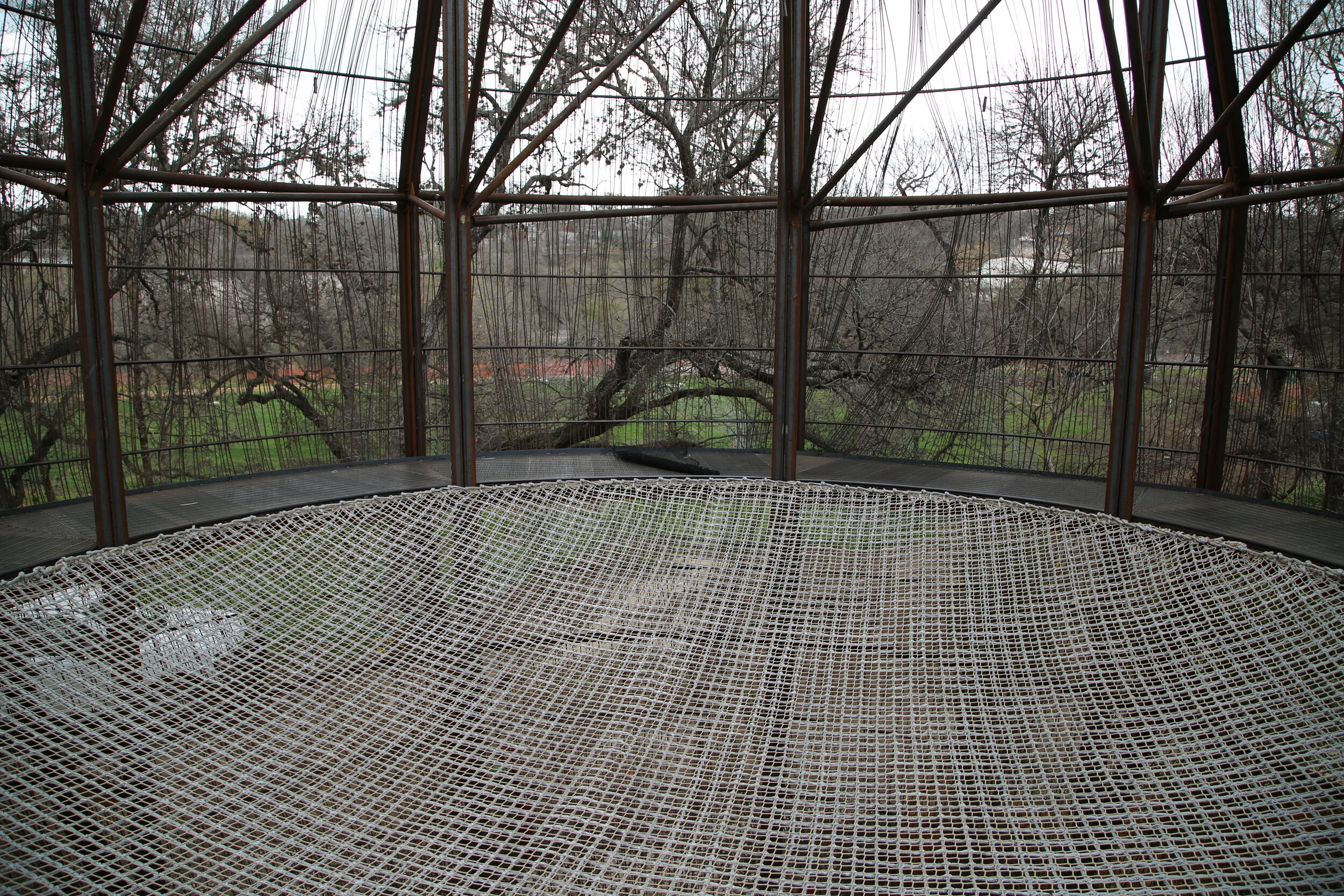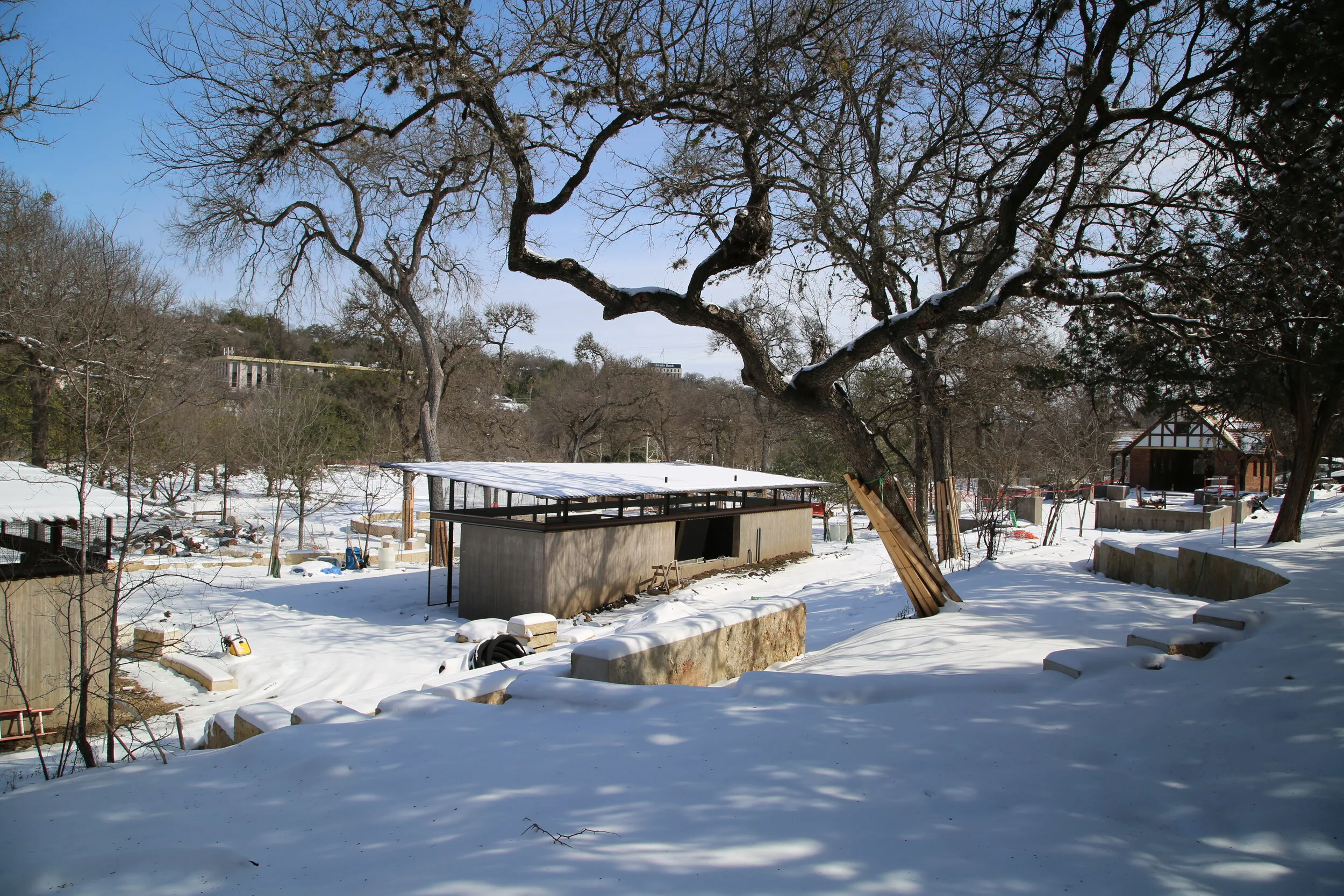There’s no disputing that landscape architecture is a field largely dominated by men. That never stopped Christy Ten Eyck. She created Ten Eyck Landscape Architects, Inc. (TELA) in Phoenix, Arizona in 1997, before so-called “women owned businesses” were even a thing. She moved the operation to Austin, Texas in 2007 and has since had a hand in creating some of the most memorable and iconic urban greenspaces around, including the Commodore Perry Hotel, the San Antonio Children’s Museum, the Livestrong Foundation headquarters, South Congress Hotel, Midland Centennial Park, the San Antonio Botanical Garden, the Plaza and Cellars at Pearl Brewery, and countless other award-winning commercial, residential, and civic projects.
In March 2017, Pease Park Conservancy awarded TELA a contract for the design and construction of Kingsbury Commons, the southernmost 7-acre tip of the 84-acre stretch of forested land known as Pease Park.
Kingsbury Commons, a one-of-a-kind, world-class urban green space is set to re-open to the public this summer.
In observance of Women’s History Month, PPC CEO Heath Riddles recently sat down with Christy to reflect on the journey of re-imagining this treasured Austin greenspace.
PPC: Hi Christy, tell me how it is you came to the field of architecture. What drew you in?
CTE: Well, my grandfather had been an architect in Dallas, so I’d been exposed to the field through him. He was old school...very talented, a very good architect. In fact, he did several projects in the Dallas area, one of which is the bandshell at Fair Park, in collaboration with a theatre architect. I was inspired by him, and I was interested in the idea of architecture, but I was also drawn to marine biology, which is, you know, its own kind of horticulture. When it came time to go to college, I was set on going to Texas Tech because my high school boyfriend was already there! I wound up settling on landscape architecture because it seemed to be a perfect combination of everything I wanted to do. It is the perfect career for me, because it weaves together all of the things I love: architecture, engineering, ecological design. All of it comes together, and landscape architecture is sort of like the glue. At any rate, my mom looked at me like I was crazy when I told her in the car on the way to Lubbock to register as a freshman.
And it has been a great career for me. There have been lots of fun parts, and lots of parts that made me cry, but that’s life. How lucky to just be able to focus on how to make something better every day. I feel like that is a gift of this profession. I get to envision taking something that is degraded and uplift it and rejuvenate it. It’s fun. It’s one of those professions where there is such a mission or calling to it, to right some of the wrongs that have happened….to heal some of the scars of the world.
PPC: What a fabulous perspective. I’m not sure many people would think of landscape architecture as an avenue to “right some of the world’s wrongs.”
CTE: It’s the truth, it can be truly healing for a space and for a community. There is a significant misunderstanding around what we do, and we struggle with that perception. Whenever you put the word “landscape” in front of something, people just think you “shrub it up.” We plant the plants and the bushes...but there is so much more to it than that. Our profession struggles with it, but lately there has been a reawakening of landscape architecture and the importance of public greenspace in our cities in the last 10 years. Maybe it’s the High Line (in NYC) we owe it all to. The High Line really has inspired a re-emergence of people wanting to reclaim space for nature and people within the city, so we have a lot to owe to that project.
PPC: What was it specifically about that project that you think resonated so deeply with people?
CTE: First of all, it’s unexpected. I mean, you are walking through bustling New York City. You are suspended in this lush, fabulous garden while being able to watch the goings-on of the city below. It’s just so cool. And everybody knew it before as this abandoned railroad track! Thank goodness for the Texans who played such a role in getting that project going. People like Robert Hammond who grew up in San Antonio. He was one of the guys who was just part of the neighborhood and he said, “Hey, we should do something with this!” I think it was he and his partner who really got the ball rolling with that. And it is just so popular. And such a refuge….utterly out of the fray of all the cars and the grit of the street. So, I think it just opened peoples’ eyes to existing infrastructure that could be improved in other cities.
PPC: Can you talk about some of your own favorite projects from over the years?
CTE: Well, that’s hard because they’ve all been special. It’s kind of like someone asking me to pick my favorite kid. One of my proudest moments was the University of Texas at El Paso. It was, at the time, one of the more overlooked campuses in the UT system. It had been neglected as far as the landscape goes. They started out with these sort of Butanese buildings and as the years went by the buildings got bigger and bigger and they’d let the engineers cover up the whole campus with asphalt. So we got to lead a campus-wide transformation project to turn what used to be a parking lot in the middle of campus into the campus heart. There were arroyos that used to traverse the campus, but had been covered with parking lots. We carved them back in to the campus heart to create these veins of water harvesting Chihuahuan desert...plantings permeating the entire campus. Now, students commute over beautiful bridges to and from class, and because of all the grade change on the campus there are so many different vantage points. I was told by the head of facilities and planning that now a visitor can walk into that central space and look through a true window right into campus life. You see students walking around and playing ball and studying across all of the different spaces. There are birds and butterflies everywhere that are drawn to the plantings. It was the hardest project I’ve ever worked on, but also the most fun. Many of these students are the first in their families to go to college, and they just love it. It gives them this wonderful college experience. Now they have a regional garden and landscape that is authentic and true to the background that many of them share.
PPC: I don’t think these public civic projects like the universities and what you are doing at Kingsbury Commons are your big money-makers, right? But you are clearly drawn to these projects. What is it about these that makes them worth your while?
CTE: It’s true. It’s true. But, you know, we are drawn to cultural treasures. We want to contribute and help. With these places that people cherish and hopefully still love as much after the renovations happen. But yes, we want to work on unique projects. I don’t want to work on parking garages, unless it’s a really cool parking garage! Life’s too short to be bored working on things you don’t want to work on or don’t believe in.
PPC: I feel like we have been on such a journey together throughout the process at Kingsbury Commons, and as the construction comes to an end, it is in so many ways, only the beginning of the project. Our part in it just happens to be, in some ways, ending. Talk a little bit about that personal journey that you go through with a project.
CTE: Yes! Totally! You know I am always most looking forward to watching our projects grow and seeing them in use. Our projects tell us the stories of the people who use them, and we always learn a thing or two by watching how people interact with what we create. The projects truly come to life long after construction is complete. Certainly the bones of what we do is the hardscape. That’s the guts, then the planting is the icing on the cake.
So I always try to stay involved for many years, because I want to see my children grow up! I just envision coming to Pease Park a lot and probably emailing you, asking to meet you out there to look at this or that. And there will be things that we’ll have to tweak. If nothing else, I want to stay involved to get good photographs! So you’ll probably be able to just find me out there most days, sitting on a bench.
PPC: Well I look forward to those emails and to joining you out on that bench.
For more information about the project at Kingsbury Commons visit: https://peasepark.org/kingsbury-commons We look forward to seeing you (and Christy!) out at the park!







